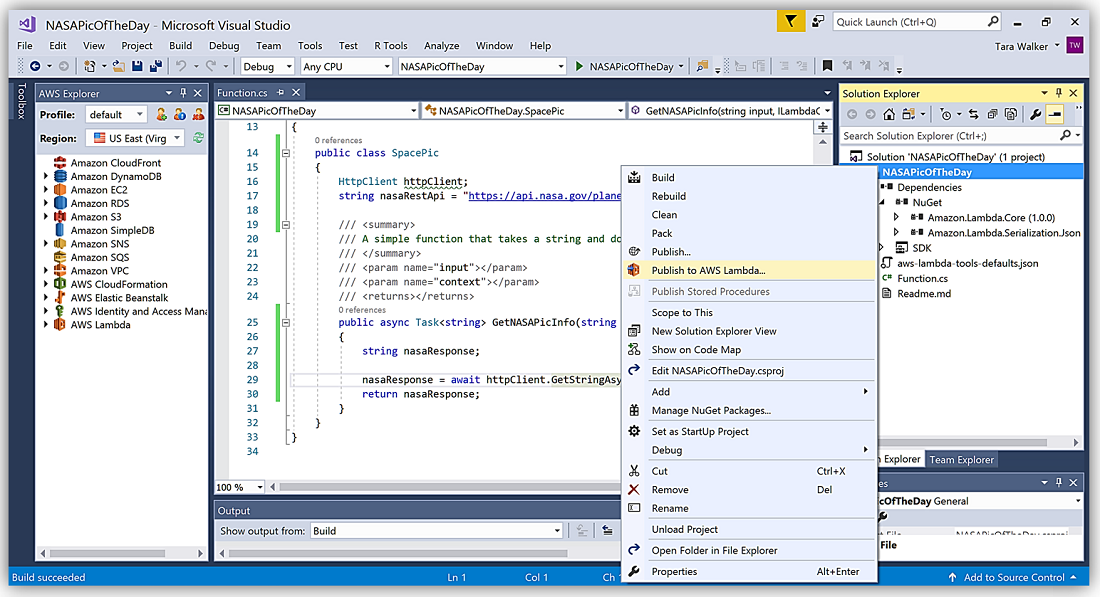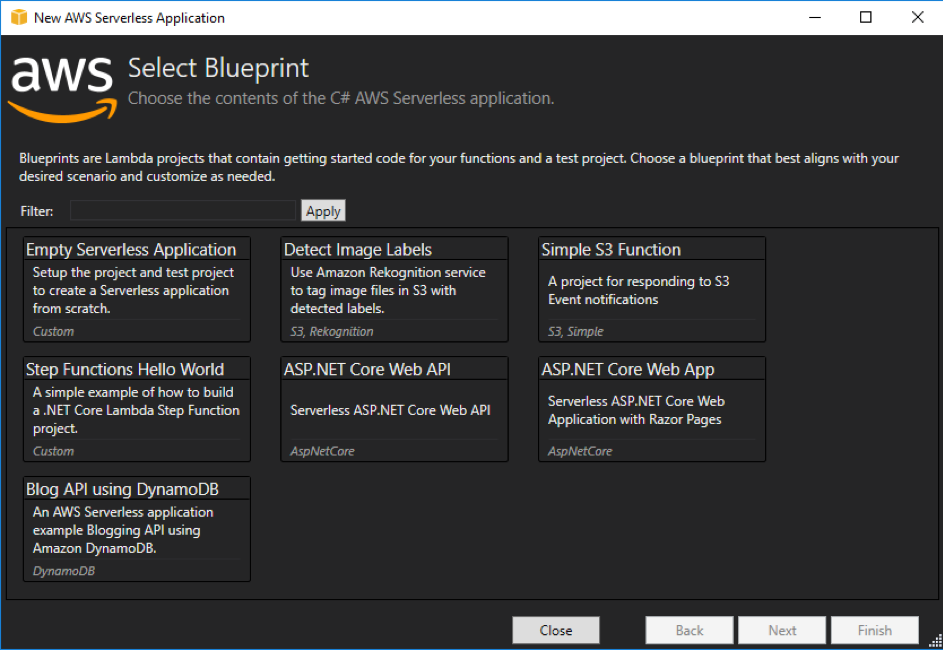
Gutter icons to run and debug Lambda handlers directly from the C# file, and from the CloudFormation template.yaml configuration file.Automatically created run configuration to locally run and debug AWS Lambda handlers inside a Docker environment.This new release adds new features for these IDEs and adds support for C# in Rider, and Node.js in WebStorm. You might already be familiar with the plugin from other JetBrains IDEs, as it was released for P圜harm and IntelliJ IDEA earlier this year, with support for Python and Java. My next challenge is to take this project and convert it to use the AWS Cloud Development Kit (CDK), and see how that compares with the SAM approach.We have good news for anyone wanting to create C# serverless applications! We’ve been working with Amazon Web Services and are very pleased to announce the availability of the AWS Toolkit for Rider, a free, open source plugin for Rider that will help you build, test and deploy serverless applications for Amazon Web Services platform. This complete code for this can be found on GitHub here. For example, the snippet above becomes:įor my investigations into the toolkit, I have created a working project that emulates a basic loan processing flow. We can now express ourselves more cleanly and - hey - maybe add some comments if we are feeling louche. This means that instead of the bracket-heavy definitions of yore, e.g.: The graph is rendered when you select the 'Render graph' and appears alongside your definition, as shown below:Ī very recent addition to the toolkit was announced in March this year and is that AWS Step Functions now has tooling support for YAML. I find following the flow of the state machine much easier to follow and validate when done by eye. Yes, there are ways of testing locally that could help, but seeing and fixing the errors in the editor is always going to be more efficient.įinally, there is the ability to render a graph of your state machine. This feature makes a world of difference in reducing the sort of simple typo errors that can eat up your time deploying to and testing in AWS. Non-existent states that are pointed to.The code validation highlights the following errors: In addition, when entering values for Next, StartAt, or Default properties, you will be prompted for state names. The code completion adapts to the type of state and prompts you for properties specific to that type. They provide a guide to creating the different types of states, saving you from having to remember the specifics.įor me the best feature of all is the code completion and validation. This is where the code snippets come in very handy. To build up your definition, you will need to add states. This presents you with a list of starting points and provides a nice way to create your initial definition. The State Machine Templates are accessed via the 'AWS: Create a new Step Functions state machine' option. If you use the 'AWS: Create a new Step Functions state machine' option from the VS Code Command Palette, then this will be done automatically when you save the created file. This is when the magic of the extension kicks in. The key to using the features above, is to save your definition file with the extension. I have found these less useful, as I prefer to deploy everything using a tool such as SAM. Note that the extension also has functionality to download definitions from AWS, create state machines in AWS, and to update the definition for an existing state machine.


This is my write-up of the features that I have found to be the most useful so far. The AWS guide Working with AWS Step Functions provides a comprehensive guide to installing and using the extension. If you are developing AWS Step Functions and you are using VS Code, then the AWS Toolkit for Visual Studio Code makes your life so, so much easier.


 0 kommentar(er)
0 kommentar(er)
